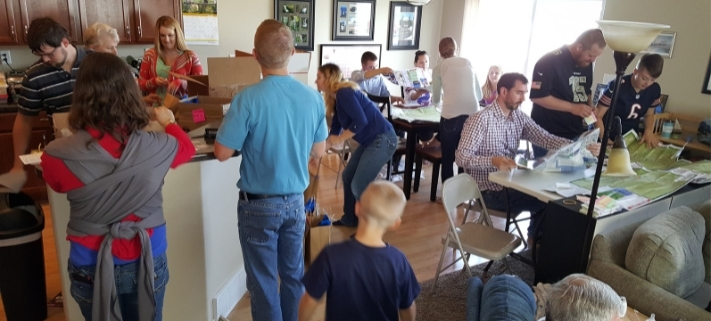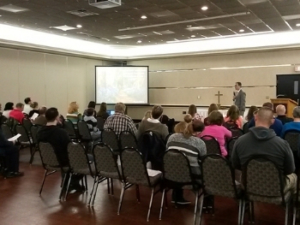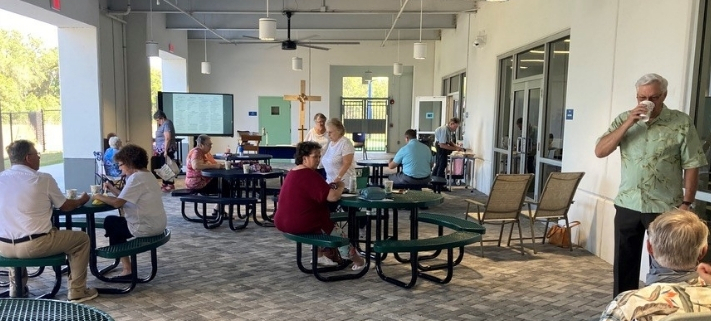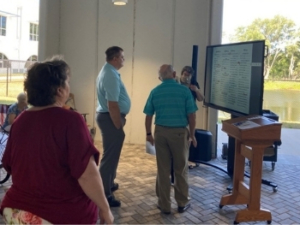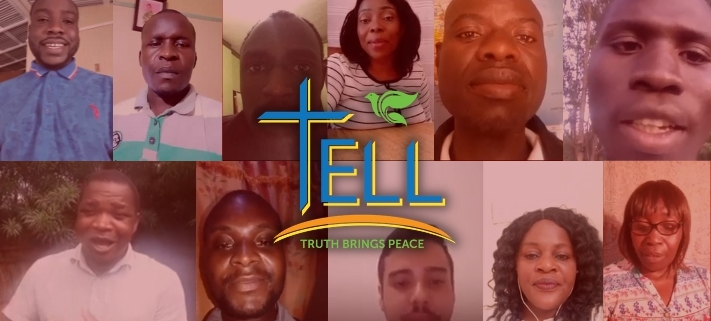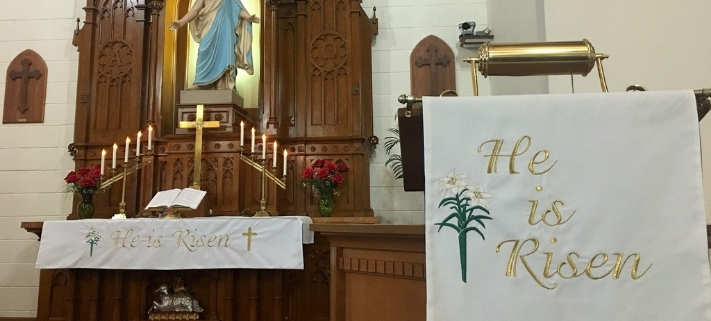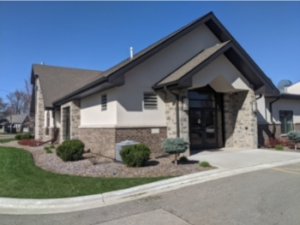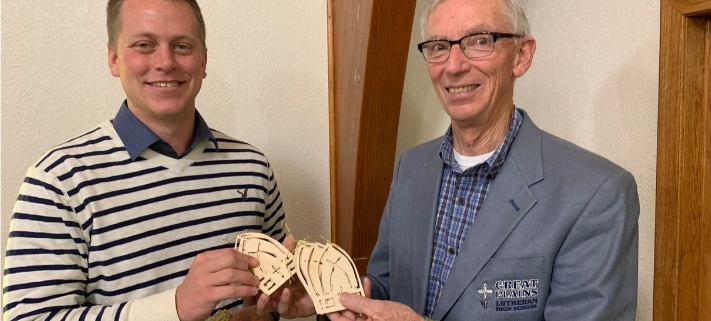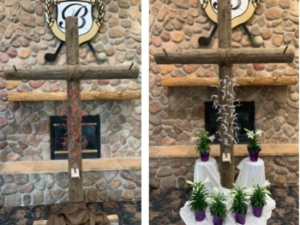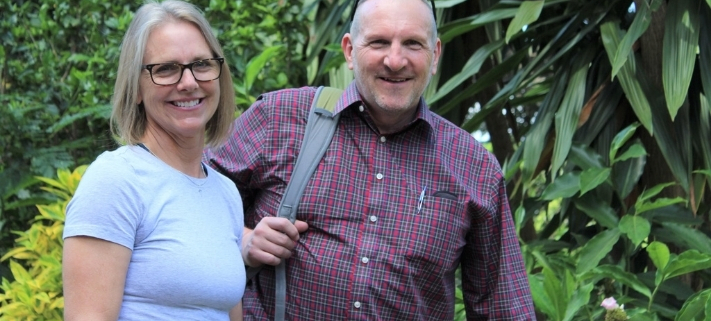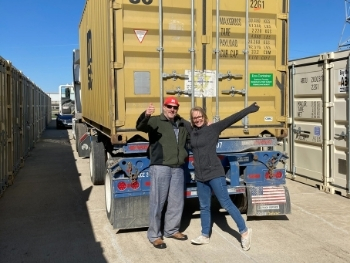I find that writing isn’t difficult. Sitting down to write—that’s difficult. The good lurking within my procrastination, fueling the fear at the edges of my work, is that it matters to me profoundly, this business of writing Word-saturated, Christ-obsessed sermons.
At last, I dare to step past the basics of preaching1 and to take up the writing task itself. As a message begins to emerge from the scribbles on my legal pad, the essential question becomes one of movement. Where to begin? Where am I heading? How will I get there?
As I take up these questions with you, I find myself entwined in the great homiletical debate between deductive and inductive styles. To tease out the differences, let’s consider two sermons based on Hebrew 5:7-10.
Sermon Introduction #1
What if I told you a story about a young pastor, early in his days of planting a church, carrying the weight of the world? He answers the phone, listens for a few moments, hangs up, walks down the basement stairs, closes the door behind him…and cries. What if I cried a little just telling you about it?
I can imagine two reactions. One: you’re embarrassed for me, put off by the show of weakness, rolling your eyes. You think, “Man, keep it together.”
But I can imagine another reaction. You think, “Of all the times I’ve heard him speak, now he has my attention. Maybe he’s like me. Maybe I could tell him things. I think he’d understand. Maybe he could help.”
The very thing that repels one person draws another. You might even wonder what was going on down there? What do they mean, those sounds coming up through the basement door?
It is just this way with Jesus. He scandalizes many—this weakness of God on display in the lowly Jesus carrying the weight of the world, God the Son crying and crying in the Garden. It is the very thing that has our attention and draws us in.
What’s going on, not down the basement stairs, but a stone’s throw away? What is the meaning of the “loud cries and tears” of Gethsemane.
Answer? The Son of God is being qualified to be the Savior of the world and the saving of you.
Deductive Preaching – Arguing from a Conclusion
A message that starts that way is on the deductive end of the continuum between deductive and inductive movement. I reached a conclusion in solitude about the telic note of Hebrews 5:7-10. My 60-second introduction was designed to prepare a compelling announcement of that day’s whole point. I left no one in suspense about what it was. In the “loud cries and tears” our Jesus is being qualified to be our Savior. I would not have hesitated to announce this theme in advance.
By “arguing from a conclusion” I only mean that it was a joy to spend the remainder and bulk of my time playing on my theme and sharing the rewards of my study, unpacking the big thought and establishing it by means of the assigned Word.
It seemed to me at the time to be the way that particular text was asking to be treated. I elected to offer that sort of clarity right up front given that there was plenty left to challenge my listeners. Our Jesus “learned obedience?” When was he ever not obedient? “Once made perfect?” Was he ever anything but perfect? I pulled out all the homiletical stops I know of in the form of illustration—of willingness made complete in the act—and application—we are being qualified by suffering, too, you know. Lord, we are learning, too.
And I dare to hope, under the blessing of Christ, that people walked away appropriating the deep beauty and consolation of that text.
There is no one who understands you like the lowly Jesus. No one who knows you the way he knows you. No one cares the way he cares. No one who could ever have saved you the way this one has saved you. That’s what you’re hearing from a stone’s throw away.
Sermon Introduction #2
Hebrews 5 has challenged me. I have feared that something is lost on me, whatever it was that caused Psalm 110 to be the most often quoted Psalm in the New Testament. The writer to the Hebrews thrills at the thought of Jesus as “priest forever in the order of Melchizedek.” To think that we have a king who is also a priest.
Um. Okay.
I have heard of priests and I know what kings are, but for most of my life I have felt no heart connection. The thrill doesn’t easily reach me.
I find I can’t go directly for the heart when I handle Hebrews 5. I need to drill down toward the heart through the head. There are things to study and grapple with, things to understand though they elude us until the Spirit lights them up.
To begin, let’s imagine the skyline of ancient Jerusalem dominated by two structures. The royal palace where the king sat amidst the trappings of royalty, power, and providence—here is one worthy of all your hopes. The holy temple where the priest serves in the aura of mystery, grace, and sacrifice—when he smiles at you, unworthy though you are, it is the smile of God.
The thing is, a man could be one or the other. Not both.
Was King David reflecting on that as he read the story of father Abraham and Melchizedek in the Torah? Did he think, “I can’t be both…but there was one once. There was a king who was also priest. There was a priest who was also a king.” Then the Spirit fell. Then true inspiration hit: “And there will be again!”
Inductive Preaching – Arguing to a Conclusion
I was, of course, just getting warmed up. There was more work to be done in Genesis 14 and Psalm 110. There was  further still to go in the “uphill climb of understanding” before we could arrive at the “smooth downhill of revealing.”
further still to go in the “uphill climb of understanding” before we could arrive at the “smooth downhill of revealing.”
That’s one way to think of inductive preaching, simplistic though it may be. Inductive movement may involve communicating both the challenge of the text as it first confronted us, as well as the way that challenge resolves, one way or another, in a fresh view of Christ crucified and raised. We share the part that perplexed or disturbed us on our way to a conclusion in which all that was dark is light, questions find answers, and the restless may rest.
That sense of missing something in the name Melchizedek—something that ought to have me leaping—is absolutely what challenged me about that portion of Hebrews 5. And because it was real, it was what I found most interesting.
It sounds cliché, but inductive preaching is intentional about leading hearers on a journey of discovery. I create an itch that needs scratching. I propose an honest dilemma, and then, well, I write my way out.
Inductive preaching is intentional about leading hearers on a journey of discovery.
Why Not Go Full-on Inductive?
The extreme arguments you encounter for inductive preaching would have us take a risk we are not willing to take, namely, that for all our cleverness, our listeners may not arrive at the truth at all. There is a radical position that smacks of Erasmus in his debate with Luther, namely, in his preferring questions over answers. To this Luther insisted that the Christian heart loves and lives off the assertions of God’s Word and its crystal-clear propositions. The predictableness of preaching that always comes around to Christ and him crucified is a good thing. No, it is the best thing.
Early in my days as a preacher, there is no doubt that when I ditched deductive preaching, I turned instead to a method I must now refer to as the “hot mess.”
Ultimately, the extreme version of the argument that takes inductive preaching to be the only preaching that shows respect for a modern audience does not honestly account for the deductive style of some of the most gifted and influential preachers of our time.
Settle on Deductive Preaching and Call It a Day?
An extreme argument for deductive preaching will be hard pressed to justify why it takes so few cues from the communication in the Bible itself with its absolutely stunning array of communication forms. There is a wildness to biblical revelation that we would only domesticate and diminish when room is not given for its prophets and poets to speak the way they speak—in love song and rescue story, smoky ritual and visions by the river. There is nothing obvious about a Burning Bush.
The exaggerated “deductive-only” rant could cause a preacher to deliver a theological treatise and say contentedly within himself, “I told them, so now they know.” He may give so much away in his published theme and parts that people feel little reason to listen.
He may casually assume that all come hungry to hear what he has to say. That hunger may need to be awakened, such as by that itch that begs for scratching, a puzzle that needs solving, a story that demands an ending, a song that disturbs for the way you hold back the final note.
A radical position prefers questions over answers.
A False Dichotomy
We need not huddle on the two ends of the continuum. Combining deductive and inductive elements keeps preaching fresh. Any time we aren’t saying something in the most straightforward way we possibly could—by penetrating questions, in narratives we don’t immediately explain, through images we hope to hang in the basement gallery of people’s hearts—we are being inductive. We’re leaving room for our listeners to complete the meanings we intend and be part of their own persuasion, making things more fully their own.
There can be entangling moments of induction within a deductive style that has no lack of clarity or authority. There can be resolution at the end of a measured time of disorientation.
None of us want our preaching to be vanilla. There is a sweet spot between numbing ambiguity and spoon-feeding. Perhaps we are not helping people on toward further outposts in Christian thinking and living when they know what we’re going to say before we say it.
The challenge, then, is that audiences are diverse with the need for both straightforwardness and discovery, what is unambiguous blended with what makes for that interesting car ride home.
There is a sweet spot between numbing ambiguity and spoon-feeding.
Genre Can Help
If my sermon text is a gorgeous psalm, I try to write elements of beauty into my message. Like a novel by Flannery O’Connor, my preaching may set grace against the blood and dead bodies of the Old Testament such as to make evil recognizable. If my text is an ancient story, I might bring it into conversation with a story of now. A provocative text asks for a provocative sermon. To say nothing of a visual text. A somber text. An ironic one.
If, on the other hand, my text is theologically dense and tightly constructed, an expository approach has wonderful possibilities. Why deconstruct and then reconstruct a text like that? Instead, set the context. Walk through verse by verse. Draw law and gospel to the surface and Christ into the frame, if he isn’t there already. Insert pictures and encouragements as the moment requires. Why not adhere to the agenda the Spirit has set?
Combining deductive and inductive elements keeps preaching fresh.
Might as Well Preach It
A kind reader of Preach the Word offered me this advice. I was unsure of where to go next on the topic of sermon writing. He suggested I include a longer excerpt of a sermon as a way to communicate indirectly what I’ve been trying to say all along.
So, if you’ll indulge me, where were we? Ah.
Melchizedek.
We were drilling down through the head and toward the heart.
I can be as foolish as the pagans for whom it’s all about the question: what do I have to do to get the deity to care? I can carry the weight of the world, but the Word reaches me again: “Cast all your care on him.” Toss ‘em like a backpack tossed across your dorm room. Throw them on the one with the scars in his palms.
He cares for you.
Or think of Isaiah mocking the pagans for the gods they fashioned from wood and stone and then had to carry around on their own backs—heavy things hunching them over. I can be that foolish and that exhausted, trusting in things I have to carry around myself. But the News reaches me again.
There is one who carries me.
We haven’t seen the last of anxiety and shame. But I can welcome them when I see how strongly they play in my bondedness to Jesus—in the fact that I will always need him.
What I need is a king.
I require a king to adore, a king who can subdue me, carry on his rule of peace in this busy mind and this troubled heart. I need the king who will consummate his kingdom, the new Jerusalem descending from the sky.
What I need is a priest.
I am capable of so much shame, the great self-inflicted wounding. Sometimes I don’t want to show my face. It is just then he shows me his. He smiles on me with the smile of God, honors me, clothes me in beauty, covers my disgrace with a righteousness that is all him and none of me. I see it now.
I need a king who is also a priest. I need my priest to also be my king.
I need to know that wherever I am and whatever I am doing, the one who prays for me is the one at the center of all things, holding all things together by his powerful Word. And when I stand before him on that day, the King of the universe, the Lord of all there is, I will be standing before the one who laid his body down.
(Long pause.)
This will sound strange, but I walked through the cemetery near my house early this morning and threw a rock as far as I could. I actually did that. That was me naively wondering just exactly how far is “a stone’s throw away.” I don’t have a great arm…but it’s pretty far. I wanted to see for myself.
Can you picture it? Have you ever been able to hear someone not only crying from that far away, but you were even able to make out the words? Imagine. The loud cries and tears go on and on. At last it gets quiet. For the moment, he’s all prayed out.
“Abba, your will be done.”
Here prays a king for all your fears, a priest for all your shame. A lone cross juts up from the landscape of human history. It dominates our horizon. Here the blood of royalty mingles with the tears of a priest.
Melchizedek! (I say this with a fist against my chest. You see it, right?)
Melchizedek!
Here is the name for the heart’s greatest affection. There is no one who understands you like the lowly Jesus. No one who knows you the way he knows. No one who cares the way he cares. None other could have saved you the way he has saved you. Blessed be the name. Amen.
The Moment the Preacher Dies
Guru of adult education, Jane Vella, steals a thought from Paolo Freire about “the moment the teacher dies.” They disagree only about whether both student and teacher recognize it when it arrives. It’s about what happens when the teacher truly joins those she means to serve in the task of learning, a student among students.
By “the moment the preacher dies,” I mean something else. Someone asked me what I pray for as I bow my head before reading my text. There are several variations on the theme. But whatever else I say to my God in that moment, I always also say what I learned in a garden:
“Not my will but yours be done.”
I know what I want to happen next. What do you want to happen, Abba? Honestly, preaching you still thoroughly humbles me. And so, because ultimately there’s my way and there’s your way, let it go your way.
As for me, let me die in this moment to all self-concern and to every doomed identity. Let me die outright to the hunger to be well thought of. But this—this preaching Christ crucified—it still scares me because of how much it matters.
I am willing to be disturbed, yearning, and unfinished until you, Lord, release the final note.
Come quickly, Lord Jesus.
As I lift my head, as I stand here, it is enough to take a good long look at the faces turned toward me and love them, even as I am loved. It is enough to be forgiven and to be, even now, on my way home.
Written by Mark Paustian
Dr. Paustian is a professor of communication and biblical Hebrew at Martin Luther College where he teaches “Advanced Christian Rhetoric” which combines an introduction to homiletics and an introduction to apologetics in one course. He holds a PhD in Communication from Regent University.
1 The previous five articles in this series were titled “Joy and Confidence from the Basics.”
Learn about how WELS is assisting congregations by encouraging worship that glorifies God and proclaims Christ’s love.
WELS Commission on Worship provides resources for individuals and families nationwide. Consider supporting these ministries with your prayers and gifts.
[fbcomments num=”5″]
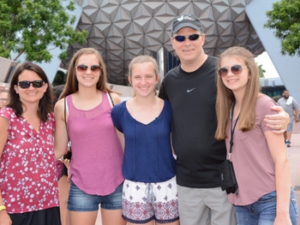



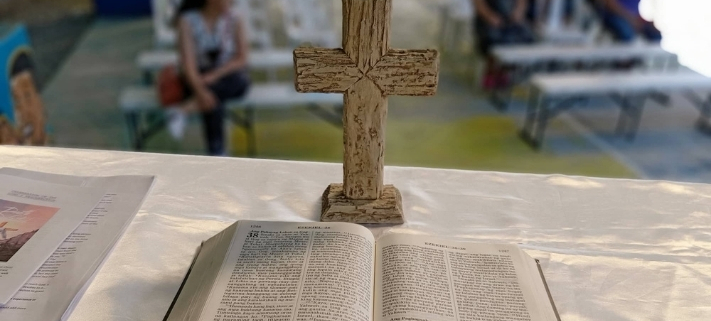
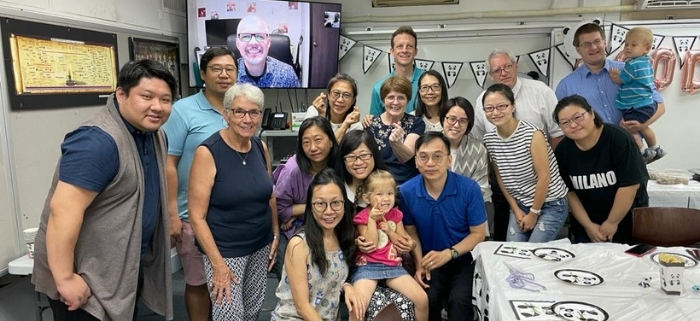

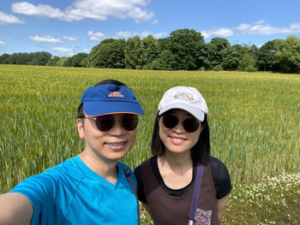
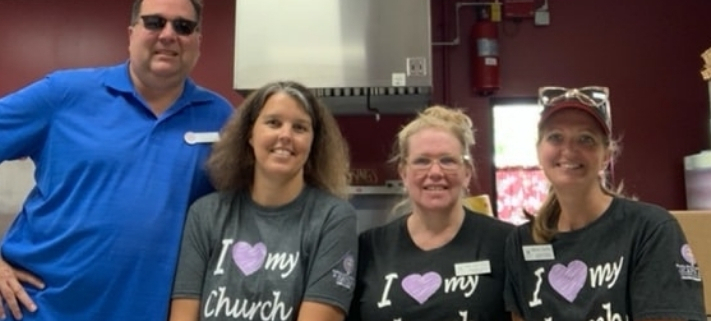
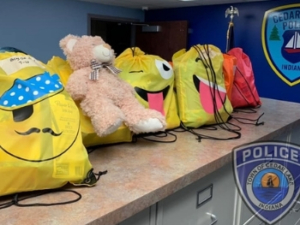
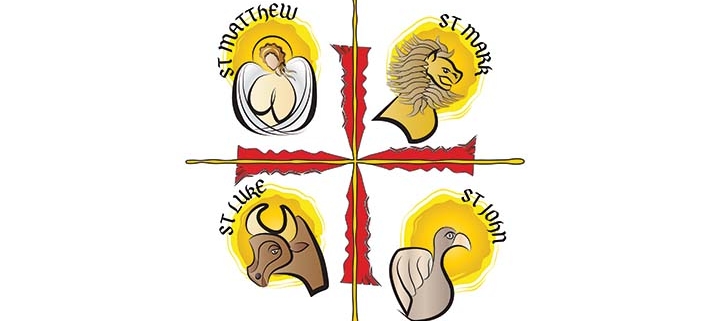
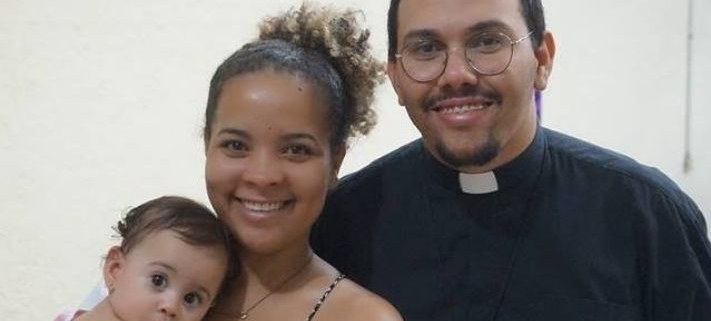
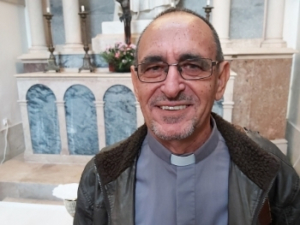
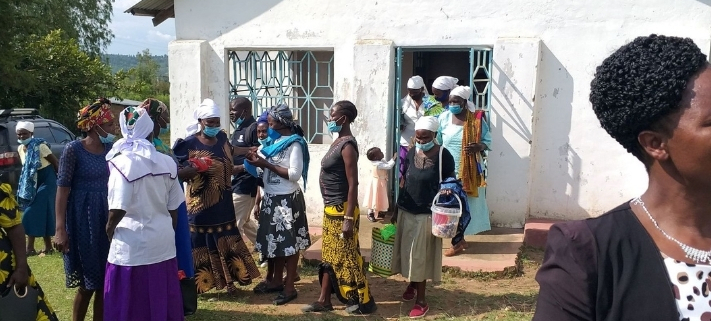
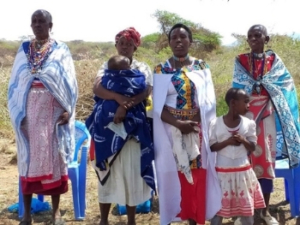
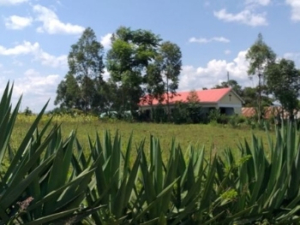
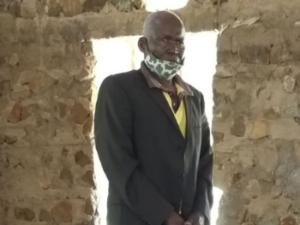
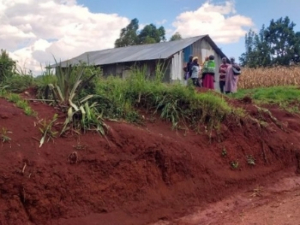
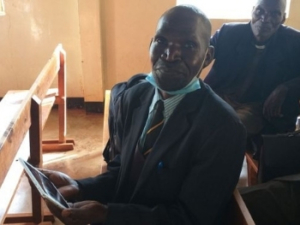
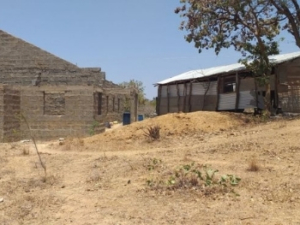
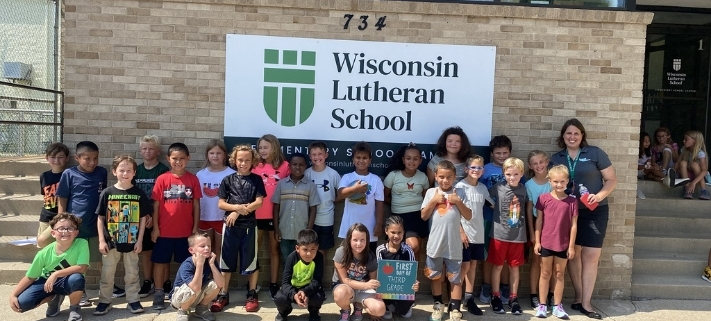
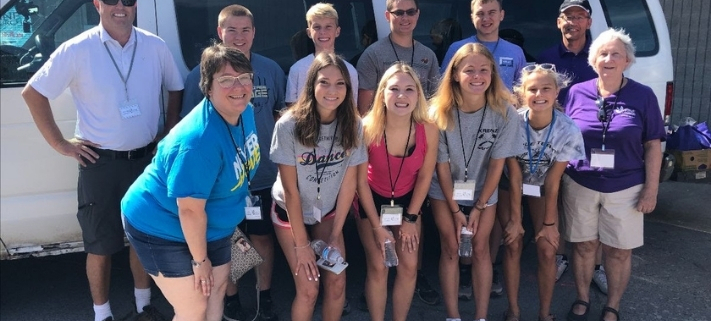
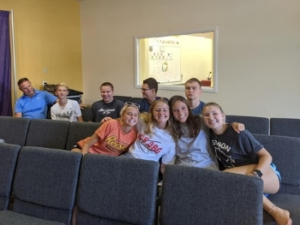
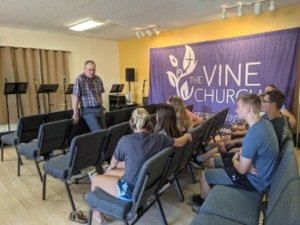

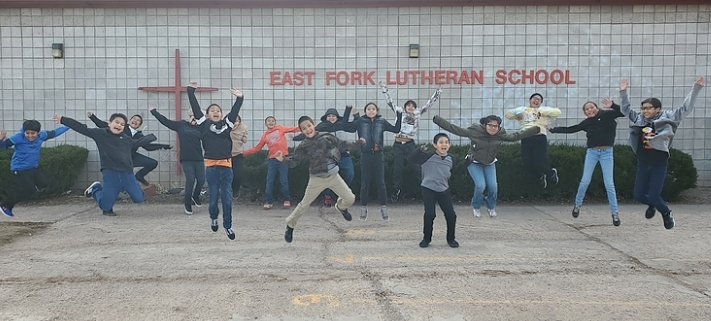
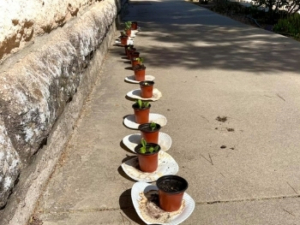

 Vlogging is the act of creating and adding content to a “vlog” or “video blog” (think YouTube). Vlogging a term often used by content creators on YouTube, or “YouTubers” when talking about their craft. The advent of good quality video cameras on phones, like the iPhone, has launched a generation of videographers eager to use the internet to get their message out there. At last count nearly 500 hours of video are uploaded to YouTube EVERY MINUTE!
Vlogging is the act of creating and adding content to a “vlog” or “video blog” (think YouTube). Vlogging a term often used by content creators on YouTube, or “YouTubers” when talking about their craft. The advent of good quality video cameras on phones, like the iPhone, has launched a generation of videographers eager to use the internet to get their message out there. At last count nearly 500 hours of video are uploaded to YouTube EVERY MINUTE!
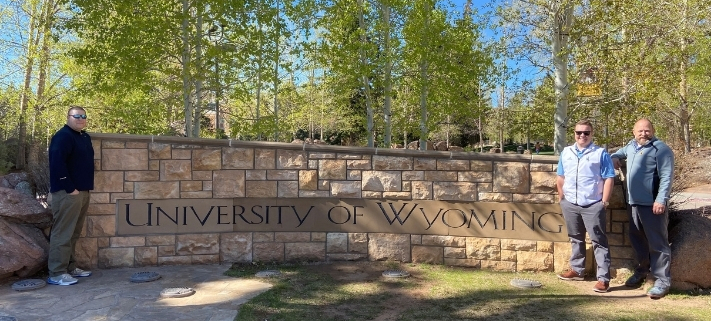
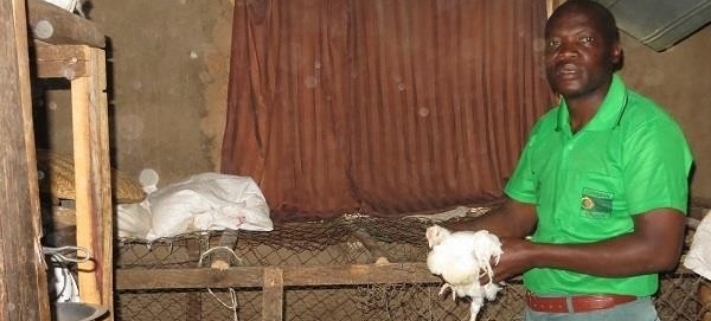
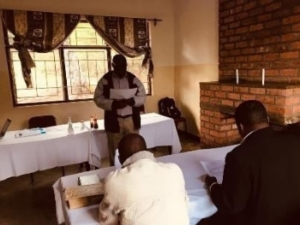
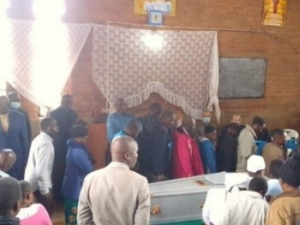
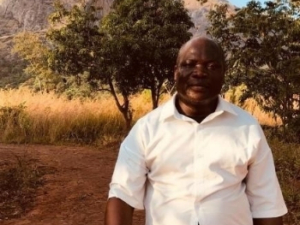
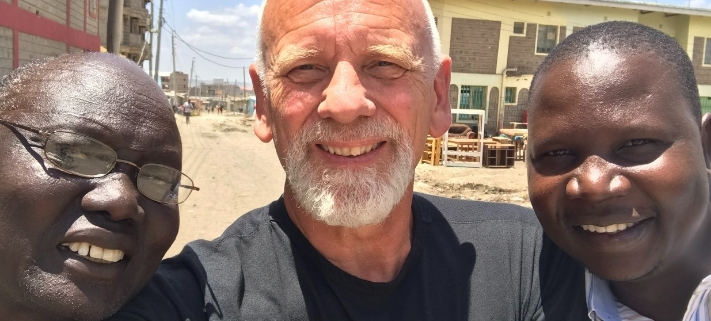
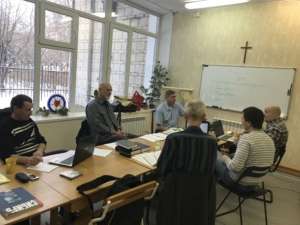
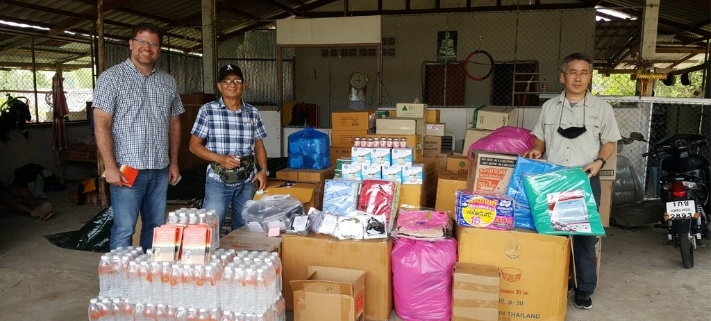
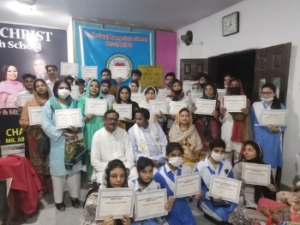
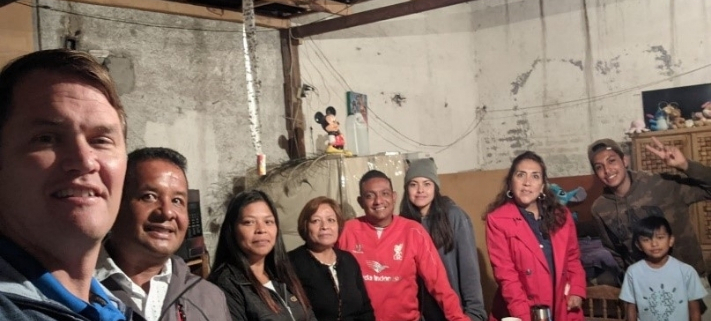
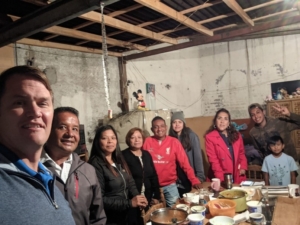
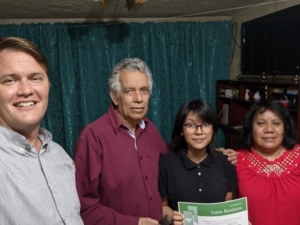
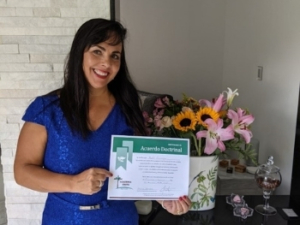
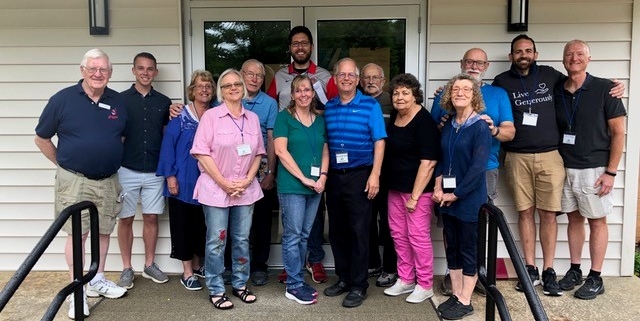
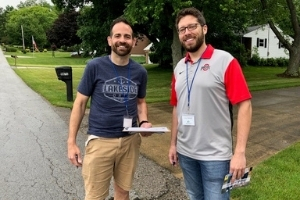
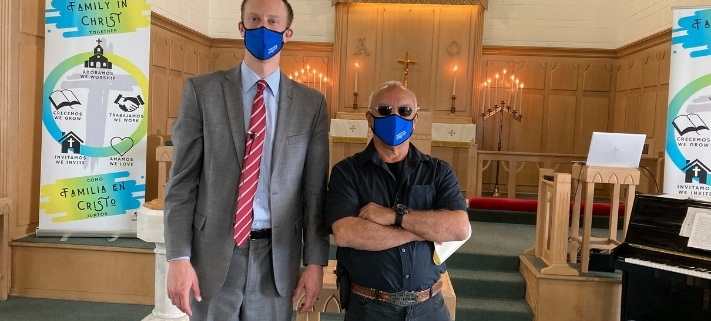
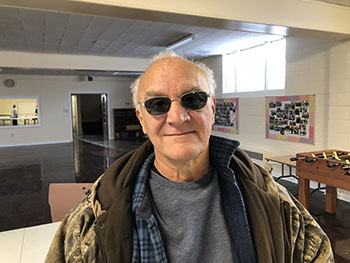
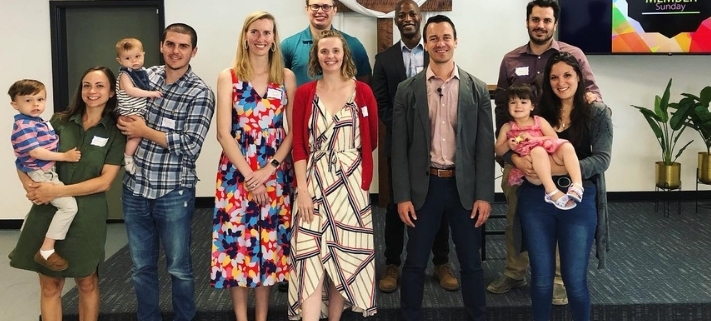
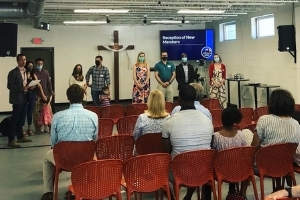
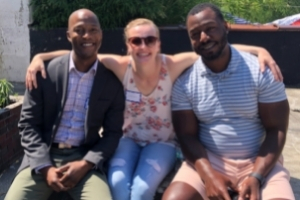
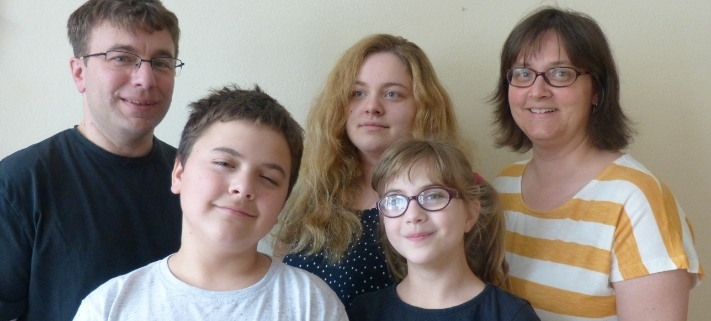
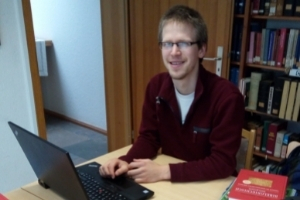
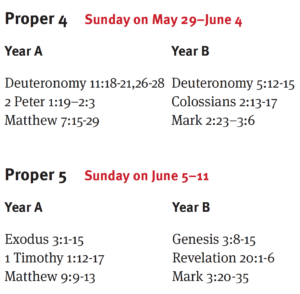 adings for the Sundays after Pentecost. The benefits of using this system include ties to wider Christianity, and the ease of determining the propers for the Sundays after Pentecost simply by their calendar date.
adings for the Sundays after Pentecost. The benefits of using this system include ties to wider Christianity, and the ease of determining the propers for the Sundays after Pentecost simply by their calendar date.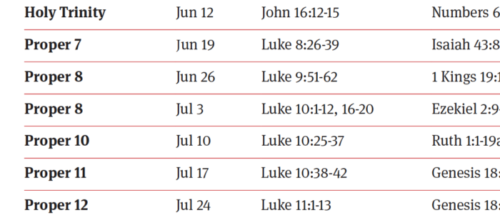

 further still to go in the “uphill climb of understanding” before we could arrive at the “smooth downhill of revealing.”
further still to go in the “uphill climb of understanding” before we could arrive at the “smooth downhill of revealing.”